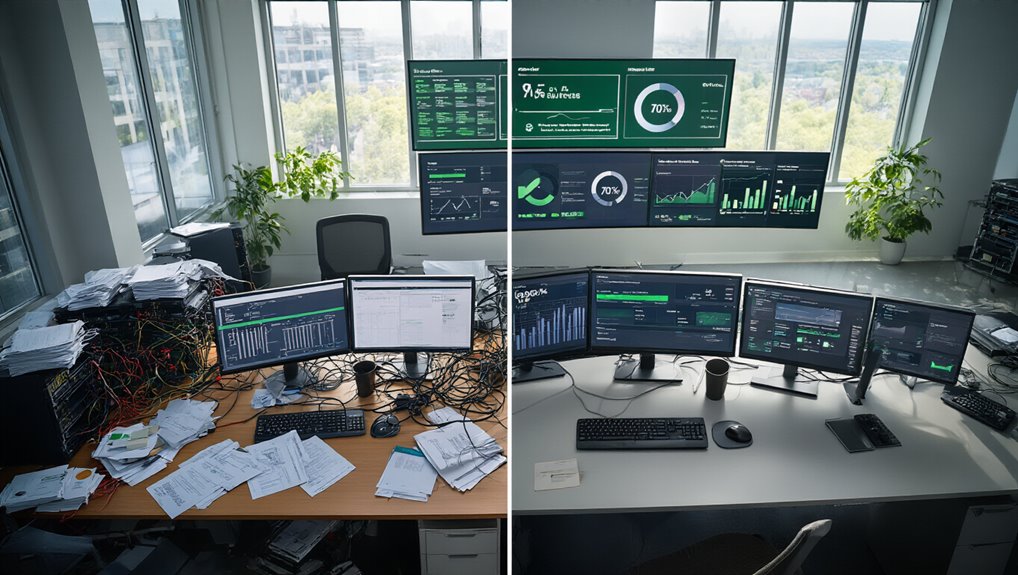Nearly every organization faces a critical vulnerability in their cybersecurity infrastructure: the help desk during off-hours. This security gap is increasingly exploited by attackers who recognize that 76% of ransomware infections begin either after business hours or on weekends—precisely when IT support is minimal or nonexistent. Organizations without 24/7 monitoring leave their systems vulnerable to undetected intrusions that can persist for extended periods.
The help desk’s weakest moments—nights and weekends—are precisely when cybercriminals strike most aggressively.
The statistics paint a concerning picture. A new vulnerability emerges approximately every 17 minutes, with half of all vulnerabilities published in just the last five years. Despite this rapid pace, many companies struggle with timely patch management, creating windows of opportunity for attackers. This delay in addressing known vulnerabilities, as witnessed with Palo Alto Networks’ Expedition Migration tool issues, leaves systems exposed to preventable attacks.
Resource constraints contribute greatly to this problem. About 30% of executives report insufficient cybersecurity budgets to address risks effectively, while 31% struggle even to identify key cybersecurity risks. These limitations often result in security blind spots within help desk operations, particularly during nights and weekends. The growing cybersecurity workforce shortage of four million professionals in 2024 further exacerbates these operational gaps.
Web applications represent a primary target, with 98% containing vulnerabilities—72% due to coding flaws. Without constant vigilance, these vulnerabilities remain unaddressed. Similarly, phishing attacks initiate over 75% of targeted cyberattacks, highlighting the importance of continuous user education and monitoring. Utilizing predictable monthly costs from a managed service provider can help organizations better budget for comprehensive security coverage without unexpected expenses.
To mitigate these risks, consider these strategies:
- Implement 24/7 security monitoring
- Develop rapid patch management protocols
- Conduct regular security awareness training for all employees
- Establish clear incident response procedures for off-hours
Many organizations address these challenges through outsourcing. Currently, 50% of companies outsource their cybersecurity operations center to provide continuous protection. Others implement security frameworks such as ISO 27001/27002, used by 48% of companies, to establish thorough security protocols. The financial consequences of inadequate protection can be devastating, with downtime costs reaching up to $16,000 per minute for large enterprises.
Your help desk represents both a critical security component and potential vulnerability. By recognizing its limitations during off-hours and implementing appropriate safeguards, you can close this security gap before attackers exploit it.









